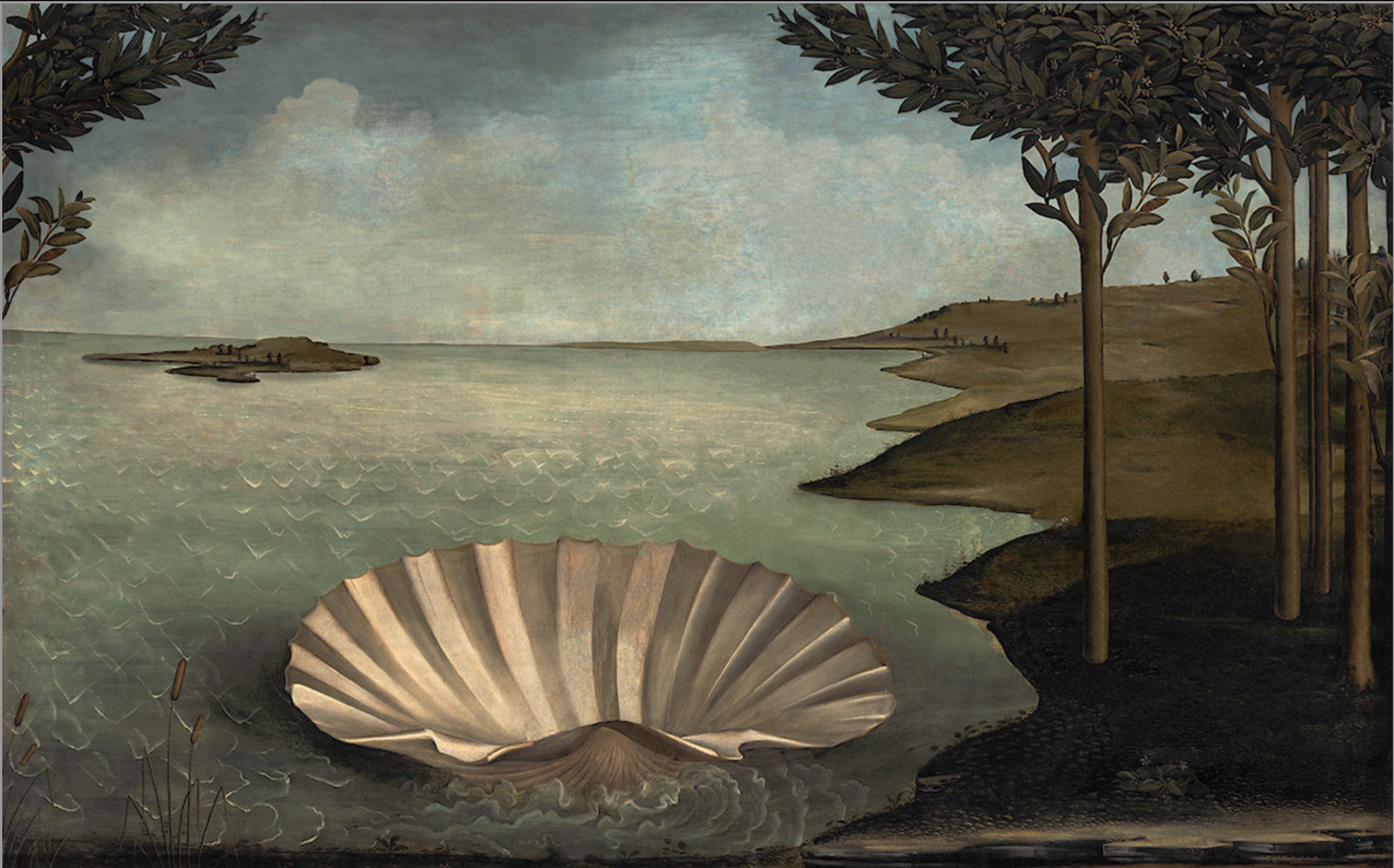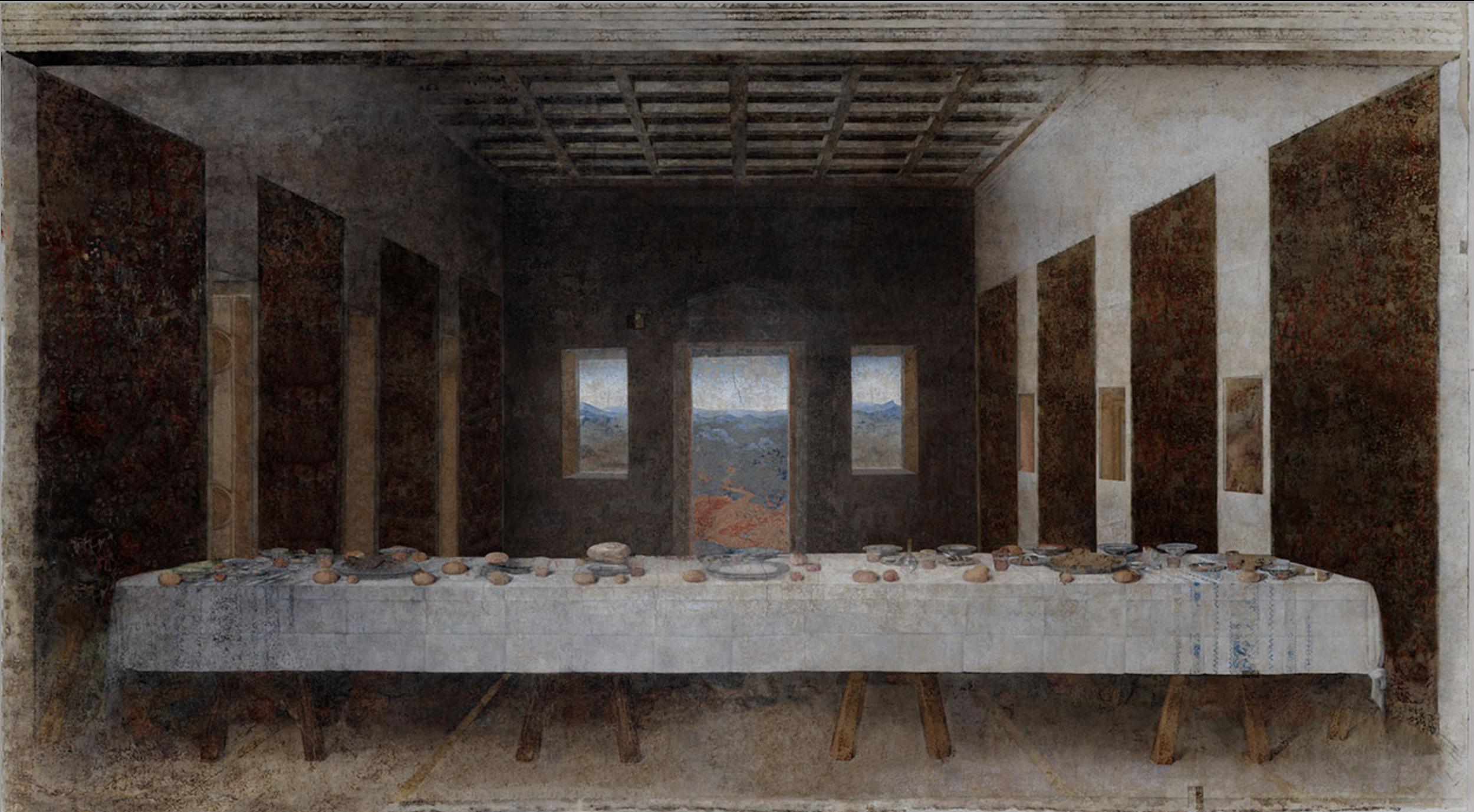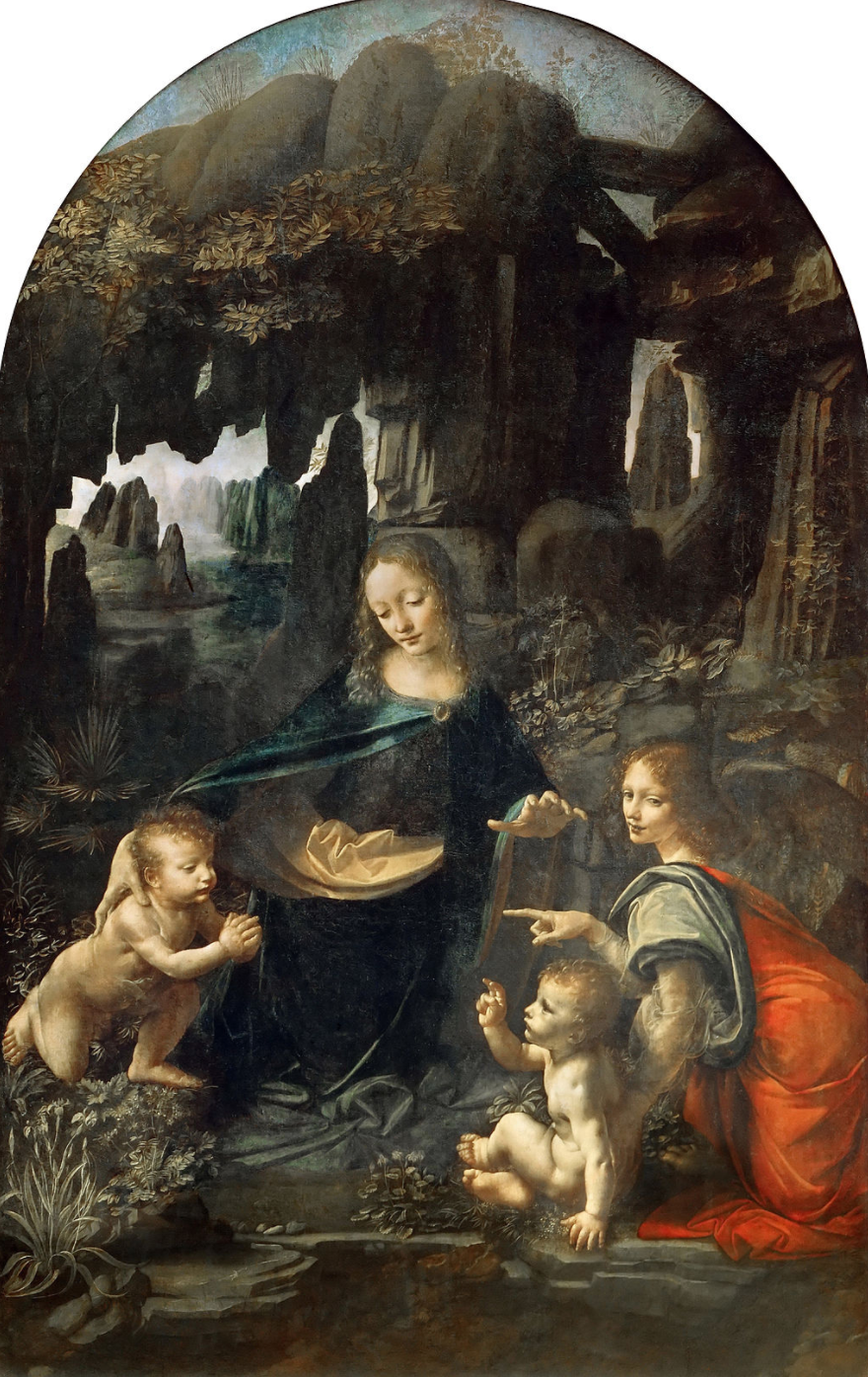The Renaissance in Pop Culture
The Renaissance in Pop Culture: A Timeless Trend
The Renaissance is one of the most famous periods of Western history. A time of artistic, cultural, political and scientific change influenced by Humanist and Catholic beliefs, the Renaissance was a long and varied movement, manifesting in many different forms. It was Giorgio Vasari (1511-1574) who first began writing on the different stages of the Renaissance, and thanks to his extremely biased and opinionated texts, the art of the Renaissance was heralded as the pinnacle of all art… and my gosh did his opinions stick around. We now see the Renaissance filtering into mainstream popular culture time after time. Now, don’t get me wrong here, I love a good pair of cherub earrings as much as the next girl and I also enjoy the art of the period. But as a History of Art student with too much time on her hands, I’m deliberating how and why the Renaissance has become a timeless trend, constantly being re-invented within pop culture.
Our journey into Renaissance-inspired pop culture starts with the category: Fashion, Makeup and Accessories!
Renaissance-inspired designs are not a rarity in the world of high fashion. Perhaps one of the most notable and recent examples was displayed at the 2018 Met Gala, in which the attendees dressed accordingly to the theme of the exhibit, Heavenly Bodies: Fashion and the Catholic Imagination. The Mother of Dragons turned Mother of Angels, Emilia Clarke, wore a Dolce & Gabbana gown which was quite literally embedded with renaissance imagery, as the skirt featured what looked like miniature paintings of heavenly cherubs floating in gold frames. Stella Maxwell also adorned a dress inspired by the Renaissance in a more literal sense, as her Moschino gown was layered from top to bottom with painted images of saints, embellished lavishly with beads and jewels. Finally, one of the most iconic Renaissance-inspired looks of the evening was worn by Zendaya, (are we surprised?), who wore an atelier Versace gown of chainmail, taking inspiration from the prominent female figure of the early Renaissance in France, Joan of Arc.
The Renaissance has also made it further into mainstream high-street fashion, for example a quick search of the word “Cherub” on ASOS will find you a multitude of Renaissance-inspired clothes and accessories: tops, t-shirts, jewelry, masks, and even a cherub print bikini! Who would have thought that biblical angel babies could become so popular that people want to wear them to the pool? Makeup collections have also looked back at the Renaissance for inspiration such as the Venus Palette by Lime Crime, which is based off Sandro Botticelli’s painting Birth of Venus (1485). It features a heavenly-grunge-glam Venus on the front, echoing the bold pink and red shades inside.
Via Lime Crime
The Renaissance influence is also seen very frequently in Television and Film.
As expected, there are numerous historical and period-based films however for some reason the first thing that came to my unsophisticated mind in this category is that the teenage mutant ninja turtles were each named after four of the most successful Renaissance artists. The turtles, Leonardo, Michelangelo, Donatello, and Raphael indicate that the Renaissance has somehow trickled down into a multitude of genres of pop culture, even where we would least expect it (I won’t lie, I love the idea that there was a whole generation of kids who thought of a ninja-fighting turtle when they heard the name Michelangelo.) Another rogue Renaissance-inspired film moment is seen in one of the posters for E.T., which played on Michelangelo’s Creation of Adam (1512) from the Sistine Chapel ceiling. In the centre of the galaxy with the earth below, the simple joining of the alien and human fingers is almost immediately recognisable. It appears one of the reasons why the Renaissance is so often embraced by pop culture is because it has become such a prominent period of Western history; the many references from art, literature, and more which it offers are instantly familiar to audiences.
E.T the Extra-Terrestrial Theatrical release poster by John Alvin, 1982.
Now, for the moment you’ve been waiting for: Renaissance influence in the Music Industry!
One of the most recent Renaissance-inspired music ventures was Ariana Grande’s God Is A Woman music video. In accordance with the religious and heavenly theme of the song, the video was full of galaxy goddess imagery, and even displayed a recreation of Michelangelo’s Creation of Adam (1512) at the end of the video. Ariana fills the position of God and is surrounded by many other celestial female angels whilst she extends her hand out to the woman laying where Adam would have been. The result… an aesthetically beautiful but also feminist take on one of the most famous paintings in Western history. That’s right, it does not just include, but hails women in the Christian story of creation. The Renaissance inspiration did not stop there, as Ariana Grande continued with this concept for her 2018 VMA’s performance of God Is A Woman, choosing at the start to replicate imagery from Leonardo da Vinci’s iconic painting, The Last Supper (1494-1498). Yet again with a feminist twist, Ariana Grande and her all female dance cast lined the table frozen in their poses, which mimicked those of Jesus and his disciplines, presenting the audience with a vision of divine female brilliance and once again proving that women do it better.
Ariana Grande is not the only pop singer to look to Renaissance artworks for inspiration. In 2013, one of Lady Gaga’s many looks in her Applause music video was inspired by Botticelli’s Birth of Venus (1485). Gaga wears a shell bikini echoing the large scallop shell Botticelli depicts Venus, the Goddess of love and beauty, standing in. Botticelli’s Venus is easily one of the most famous and iconic artworks to come from the Renaissance and her display of beauty, sexuality, and femininity has made her one of the most sought after and inspirational female figures in pop culture. Therefore, it’s no surprise that the Queen herself, Beyoncé, also evoked Botticelli’s Venus in her pregnancy and birth portraits with her twins, which were created by artist Awol Erizku. In the dazzling maternity portraits of Beyoncé, there are references to Venus in the whimsical floral arrangements which surround her, and in the flowing tulle headdresses which allude to the Goddesses’ long flowing hair. There are also nods to Botticelli’s Madonna and Child, (1467), in the floral archway behind Beyoncé in each photograph, and the pink and blue drapery which cloaks her whilst she holds her babies in the after-birth portrait. The portraits mix together these classical and infamous figures of motherhood and virtue with feminine sensuality and love, creating a modern-day take on the Renaissance female body. Beyoncé also recently continued such Madonna imagery in her 2020 visual album Black Is King. During the song MOOD 4 EVER, we are shown a Renaissance style portrait hanging in a mansion which depicts Beyoncé clad with a halo and blue cloak, carrying her two twins, with her daughter Blue Ivy and flying cherubs by her side.
Black Is King Visual Album detail, 2020.
To close this look into Renaissance-inspired pop culture, I would like to draw your attention to two artists whose works also draw on imagery and ideas from the Renaissance. Many artists have done this for centuries; however, these artists interpret the period in a way which gives their works a deeper sense of poignancy in our current world.
Harmonia Rosales is an Afro-Cuban American artist who became captivated with many “masters” of the Renaissance when she was young, “but she could never relate because they depicted primarily a white male hierarchy and the idealised subordinated woman immersed in Eurocentric conception of beauty.” Therefore, Rosales takes inspiration from such masters, but shifts the focus of her works towards “black female empowerment in western culture.” Some of her paintings take on the backdrop of old “masterpieces” such as The Birth of Oshun, which takes on the imagery from Botticelli’s Venus and The Creation of God, which plays on Michelangelo’s Creation of Adam. However, Rosales replaces the European figures with Black female figures such as Oshun, the goddess of fertility and love for the Yoruba people of Nigeria, who instead stands in the iconic scallop shell. Rosales’s works take on the skillful, glamorous, and ethereal qualities of the Renaissance, but they are used to re-write Western narratives and create self-authorised representations of Black women, in which they are depicted with beauty and power. With the importance of the Black Lives Matter movement today, Rosales’s works are particularly significant as they provide visibility for Black women, but also because they challenge Western standards of beauty and art which have been predominantly exclusive, white, and Eurocentric.
Jose Manuel Ballester is a Spanish artist who interprets the Renaissance in a different way, his 2013 exhibition Concealed Spaces featured a series of digital prints in which he replicated old European “masterpieces” and removed the figures. Since the creation of the works around seven years ago, the prints have now taken on a whole new meaning or way of interpretation, because in 2020 they are eerily reminiscent of the early stages of the ongoing pandemic. In Ballester’s renditions, da Vinci’s Last Supper instead presents us with an empty table, meanwhile, his Virgin Mary is nowhere to be found on the Rocks, his Annunciation also appears unattended, and for the first-time even, Botticelli’s shell lies empty on the shore. The sight of some of the most famous works of art from the Renaissance devoid of all human life echo the scenes of monuments and streets around the world which were seen empty for the first time at the beginning of lockdown. When viewing Ballester’s works now, they evoke themes of isolation and much like the effects of lockdown, they force the viewer to contemplate their presence and existence in the world.
The Renaissance as a period had an influence which appears to be timeless. Its products are always being re-used, and just like its meaning, reborn, in both the art world and in popular culture. But what is it about the Renaissance that keeps us returning to it time after time? Perhaps, it’s the celebration of the human body at its core which leads artists, musicians, and designers to constantly be inspired by the art of the period. Whilst also the glamourous, detailed, lavish, symbolic, and dramatic qualities of Renaissance art have a large appeal to pop culture. As an artistic period which is fairly well-known, it also allows audiences to recognise and connect with its symbols as they have a sense of familiarity and pre-existing context. However, it is also important to keep in mind that the Renaissance has also been pushed into the limelight from its beginnings by figures such as Vasari, but also by colonialism and Eurocentric dominance which forced its own art onto other cultures. The Renaissance can be categorised partly as a time of discovery and development of knowledge in which works of art were often influenced by the artists own contemplation and reflections on the world, therefore making it a period which is often looked back on to reflect on where we are now. So, the next time you’re getting ready for a night out of socially distanced fun and you decide to wear your angel print T-shirt or your favourite eyeshadow shades from the Venus palette, give a nod to the Renaissance… and don’t forget your cherub mask before you leave the house.
Alexandra McDermott Brown is a fourth year student at the University of Edinburgh studying History of Art. She is the Arts Editor and In-House Illustrator for Ensemble Magazine.

























